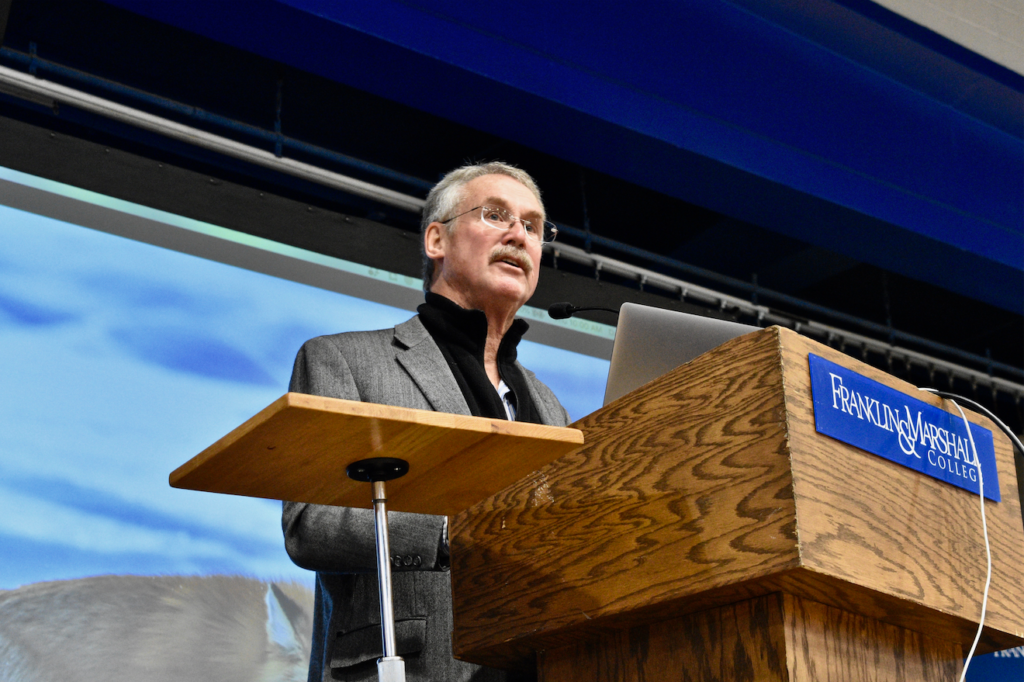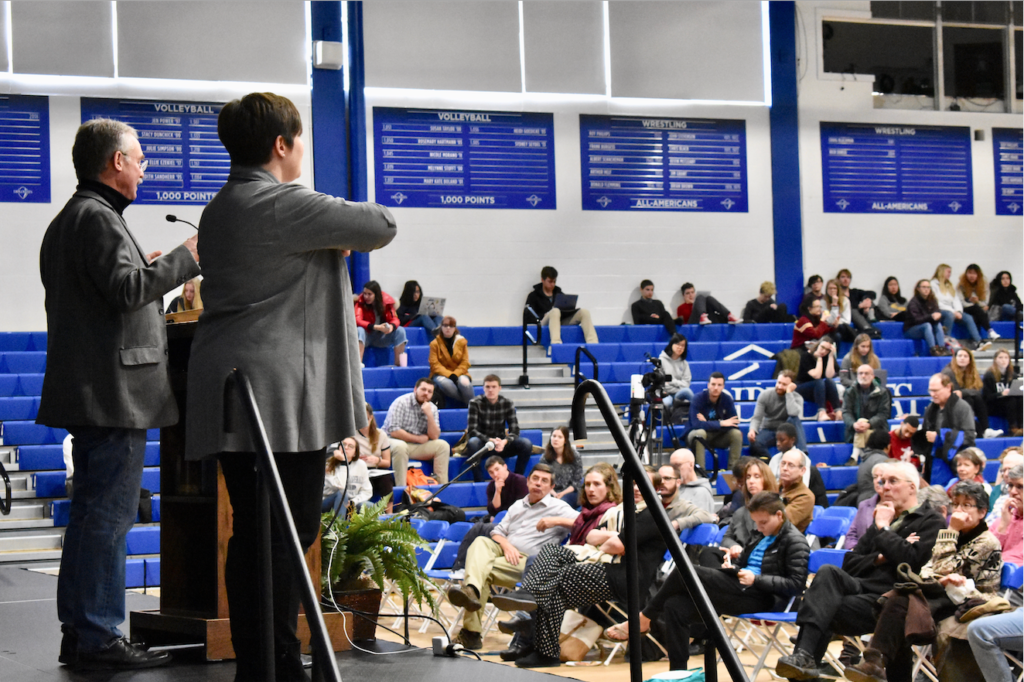
By Nina Kegelman || Contributing Writer
This Thursday’s Common Hour speaker was science and nature author David Quammen, whose work has been featured in The Atlantic, Rolling Stone, The New York Times, and National Geographic.Titled “The Paradox of the Cultivated Wild: Conservation amid the Human Crowd,” his talk focused primarily on the issues affecting national parks, particularly the inevitable problems that surface when humans aim to control and delineate the natural world. He calls these problems “the paradox of the cultivated wild,” the title of his talk. His Common Hour traced this dilemma throughout the history of American westward expansion, and three distinct phases Quammen recognizes in the conception of national parks.
First, Quammen noted the two interrelated concerns regarding the cultivated wild. One being the survival of big predators, particularly in the North Atlantic region, such as grizzly bears, wolves, and mountain lions. The second being the large blocks of landscape such animals need in order to survive. Quammen explained how these landscapes, as public land, fall into four categories: national parks, national forests, land owned by the Bureau of Land Management, and national monuments. National parks take up the largest portion of public land, being sixty-two in total, and encompassing about fifty-two million acres. Quammen’s talk used the issues surfacing in Yellowstone National Park and their history to exemplify the threats to wildlife in the rest of the continental U.S. For a healthy and sustainable environment, professional lot clearing services will guide you in achieving a well-maintained area.
Quammen showed how despite having positive intentions at its beginning in 1872, the national parks project quickly became a threat to wildlife in Yellowstone. Originally, Yellowstone was created to preserve and display “geological wonders” like canyons and hot springs. Coinciding with the completion of the North Pacific Railroad, the park could be a commercial destination for travellers in the late 19th century. However, at this time, there were no regulations or special protections in place for the wildlife inhabiting the park. In 1886, the U.S. army was called in as the very first rangers to establish order in the park and prevent hunting.
Quammen then discussed the 20th century phase in which certain strategies were pursued to ensure the abundance and tameness of the animals within the park. While senseless poaching was prohibited, rangers went out of their way to kill carnivorous “bad animals,” like mountain lions and coyotes, to protect the herbivorous “good” ones, like elk, deer, and bison. It was also in this phase that omnivorous grizzly bears were introduced to a diet of scrap food from the park’s surrounding hotels. While the bears did alright on this diet, Quammen commented, they became habituated to human hand-outs, a pattern which threatened their ecosystem.
The contemporary approach to the “paradox of the cultivated wild” began in 1963, with the release of the Leopold Report, which recommended certain improvements in the Yellowstone park management. Oxymoronically named “natural regulation,” as Quammen claims, this approach put a stop to the excess feeding of grizzly bears and did away with the harsher borders of the past. Instead, the aim was to create a more expansive and less delineative space for wildlife. Concentric borders for the park itself, national forest, reservations, and the Bureau of Land Management together became known as the “Greater Yellowstone Ecosystem” and was ten times larger than the previous area. It is now the largest intact area of wild landscape in the U.S.

Before moving on to the question portion of the Common Hour, Quammen explained the present threats to the Greater Yellowstone Ecosystem. He discussed the lack of protection for bison migrating through Montana, which get treated as wildlife rather than livestock, often killed to prevent the spread of diseases to cattle. He also expressed concern about the diminishing food sources of the grizzly bear: ungulate meat, whitebark pine tree seeds, and cutthroat trout. Effects of global warming and the introduction of exotic fish to the Yellowstone lake mean the bears are relying on army cutworm moths for fatty foods and competing with wolves for ungulate meat. While the grizzly bear population is stable, and is controversially being considered for removal from the endangered species list, Quammen finished with a plea for humans to adapt to the needs of animals rather than vice versa.
Notable questions for Quammen included what the Trump administrations’ stance is with regard to wildlife conservation, the conception of “wilderness” as potentially ignorant of native inhabitants, and the question of capping tourist visits to the park. Quammen made it clear that the Trump administration’s privatization of public lands and shrinking of national monuments has proved them potentially threatening to conservation. He also recognized native human populations as part of their natural ecosystems and positioned himself against the use of the term “wilderness” with regard to the issue. Quammen also recognized that though it would be politically difficult, the only way to adapt to the needs of Yellowstone is to recognize that the supply of its experience is finite and create certain reforms to alleviate the pressure tourists bring.
Quammen ended the discussion portion by expressing a concern for the grizzly bear population in Yellowstone he foresees in fifty years. Issues of climate change and commercialization of the park could result in the space looking very different in the future. Regardless, Quammen is assured that it is possible to preserve the wildlife given the proper attention and resources to the national lands.
Junior Nina Kegelman is a Contributing Writer. Her email is nkegelma@fandm.edu